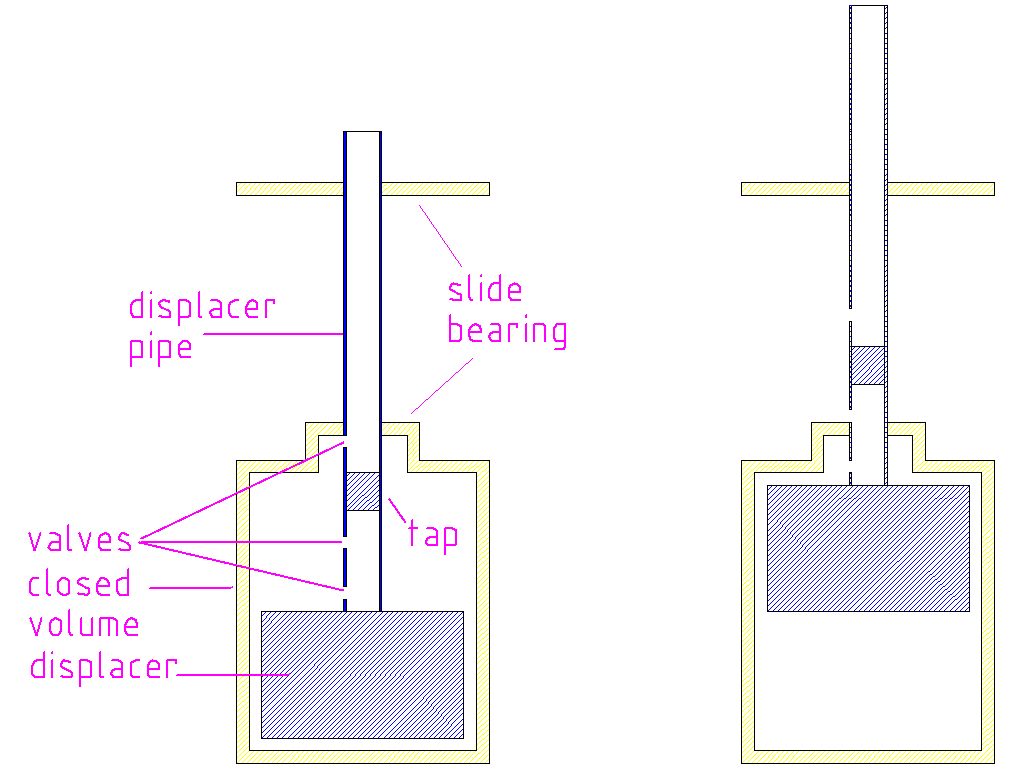A Single Piston Manson Engine Prototype
Before going into details, please note: I am not pretending that the prototype is new, nor I intend to steal anybody's patent or intellectual work and property. And also, USE AT YOUR OWN RISK!!! HEAT ENGINES CAN BE DANGEROUS, IF NOT PROPERLY USED!!! ESPECIALLY EXPERIMENTAL ONES!!!

Principles of operation.
I will skip the principles of operation of usual Stirling engines, you can find them on the Internet. The prototype I would like to present has the following modifications:
- Displacer piston and working piston are rigidly connected and form a single piston. The working piston is made of a metal pipe, the displacer pipe. I used wood as material for the displacer part, but metal would be better.
- There are valves used to equalize the pressure inside the engine with the atmospheric pressure at the right moment. The right moment is when the pressure inside reaches a minimum or maximum. The valves are just holes in the displacer pipe. Their placement (see picture) together with a tap inside the displacer pipe, allows the air to flow outside or inside the engine at the right moment.
- The valves are just holes drilled at the right place directly in the displacer pipe.
- The prototype uses an elastic band to store energy for achieving a reciprocal motion. The elastic band is just for testing, a flywheel can be used instead, as in usual Stirling motors. Note, that since there is only a single piston, you don't need a complicated crankshaft.
The picture above shows the the prototype in its two end points.
When the displacer is down, the upper valve comes inside the closed volume of the engine. The pressure in that volume is less than the atmospheric pressure, so air comes from the pipe through the valve into the engine. When the pressure evens out, the energy stored in the elastic band starts moving the whole piston upwards. When the upper valve leaves the closed volume, the air connection between the closed volume of the engine and the atmosphere is cut off. As the piston continues to move upwards, the pressure inside the volume begins to rise. The pressure difference increases the force driving the piston upwards. Finally, the upper end point is reached and the middle valve comes outside the volume. The pressure inside the volume is at its maximum at that point.
Now air flows outside the volume through the lower and the middle valves. The pressures even out and the pressure force driving the piston upwards disappears. Now the gravitation (and/or the elastic band) drives the piston downwards. After the middle valve is in the closed volume again, the pressure inside the volume starts decreasing. The pressure force adds to the gravitational force and accelerates the piston downwards.